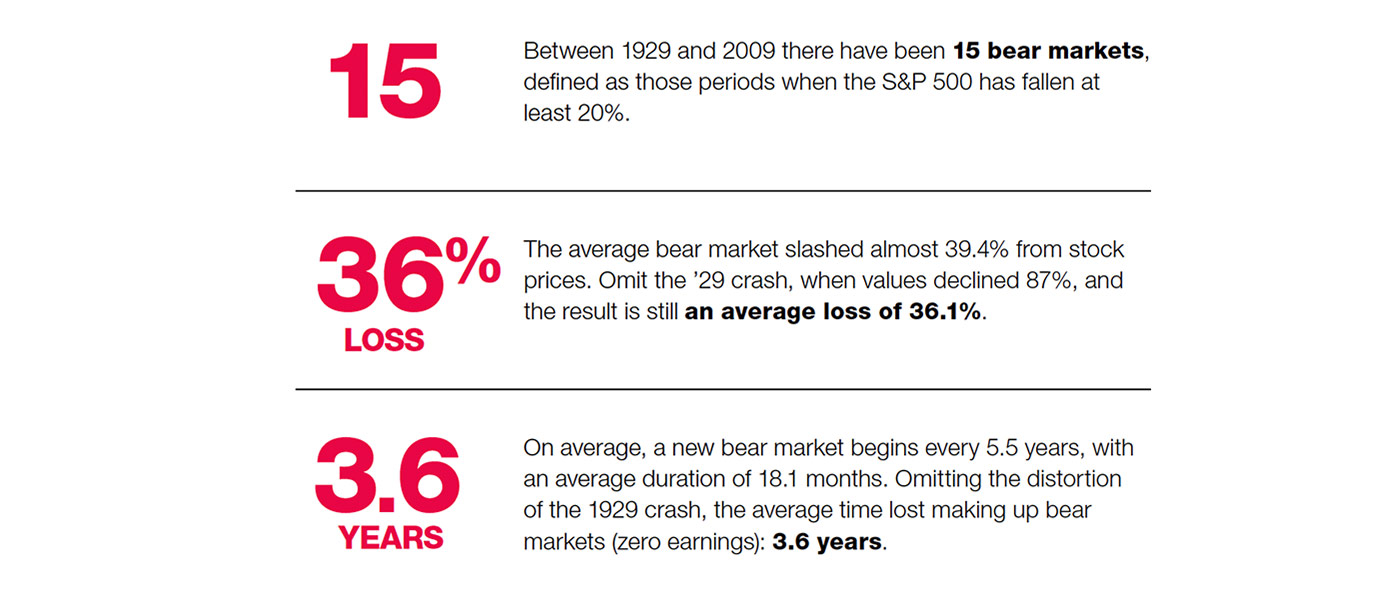‘Tradition’? Not in asset allocation
‘Tradition’? Not in asset allocation

Traditional asset allocation ignores its own historical return and risk characteristics—and the impact of real-world results on investor decision-making. A better option can be found by building portfolios using many different dynamically managed core strategies.
“Fiddler on the Roof” is one of the most enduring musicals written. It first previewed here in Detroit in 1964, and I see that it is returning here for the umpteenth time during the 2020 season to the same theater where it had its original tryouts 55 years ago. I’m sure there is a regional or touring company still performing it somewhere near you in the year ahead as well. If not, the movie version is always available!
One of the most important songs in the show is the opening number, “Tradition.” It sets up the conflict present throughout the remainder of the production—the villagers trying to maintain their traditional approaches to life, marriage, and family versus the more modern way of doing things. Spoiler alert: Modern (mostly) wins.
In my own field of asset management, the conflict continues. Yet I believe there are many reasons why traditional asset allocation does not work.
Some clarifying notes before we proceed:
- When I say “traditional” asset allocation, I mean passive or static asset allocation. And don’t be confused by those firms claiming to have active asset allocation when all they do is make some quarterly tweaks with no tactical decisions. That is not the dynamic management that I would contrast with “traditional” asset allocation.
- When I say “traditional asset allocation does not work,” I don’t mean mathematically. I mean in practice for most people.
This is a problem because history demonstrates traditional asset allocation’s main defense against market crashes—diversification—is simply not sufficient. In the last two market crashes, a balanced portfolio lost more than one-third of its value. In the 1930s, a portfolio composed of 60% bonds and 40% stocks would have lost 63%!
At the same time, the diversification, which can fail to deliver enough defense when the market crashes, may also result in mediocre returns when the market is rallying. Inherent in the design of “traditional” asset allocation is the truism that it cannot deliver the return of the best-performing asset class during any period. Because static allocations diversify the portfolio with multiple asset classes, the “best” return possible is limited to the average return of the asset classes weighted by a static formula.
As Charles Sizemore, CFA and editor and portfolio manager for economic forecasting and investment research firm Dent Research, has written repeatedly in Forbes, “Accepting a traditional asset allocation is accepting the possibility for disappointing returns in the years ahead. If you want better performance, we need to look elsewhere.”
The financial-services industry knows this. For the last few years, I’ve heard many major providers give financial advisors the same message at industry gatherings: Forget providing or finding superior asset management. Be satisfied with buy-and-hold indexing. Concentrate instead on just two services: bringing in assets and talking investors through the substantial periods consumed by market crashes and low returns.
When I say “substantial periods,” I mean most of the time. A study I did some years ago showed that the average investor in the Dow Jones Industrial Average, an index of the bluest of blue chips, spent 76% of his or her time in the stock market going through a market crash and returning to breakeven.
Of course, there are many reasons why investors give up on traditional asset allocation. Most of them are related to a lack of conviction.
The investor did not create the allocation that he or she is required to stick with. The methodology was not based on an independent, reproducible methodology the investor can understand, and it was not grounded in a personal investment philosophy. These deficiencies mean that the investor will not have the understanding and belief in the allocation that is necessary to stick with it when the financial market environment turns negative.
In addition, sticking with a traditional asset-allocation plan flies in the face of all we know about investor behavior. Investors are averse to loss; we are told they fear loss more than twice as much as they appreciate gains.
Further, investors are impatient. Many look at their investment results more often than the once a year experts have found to be optimal. Investors are reactive. They move based on emotions and thus typically make less from their investments than the assets they invest in due to poor tactical decisions.
Investors find it extremely difficult to practice both of the actions upon which traditional asset allocation relies. As we have discussed, they cannot hold on in loss situations, and when it comes time to rebalance, they have trouble taking money from top-performing investments and putting it into their poorest performers.
Investor risk tolerance is not static as so many assume. We find that the answers to suitability questionnaires can be influenced by the state of the market. In good market environments, investors say they are more comfortable with risk than when asked the same questions in the midst of, or just after, a market crash. As a result, they will take on riskier strategies or asset classes near market tops and will only consider defensive positions at market bottoms.
Traditional asset allocation fails because it is not a true match with the investor’s tolerance for risk and low returns. Investors and their advisors look at average returns and volatility numbers when an investment is proposed rather than focusing on measures that reflect their real-time experience and their probable reaction to them.
Investors are more likely to get a real sense of an investment’s suitability if they look at its maximum loss rather than its volatility (standard deviation). This is so even if that volatility is explained in terms of how it relates to the S&P’s.
This is because volatility is not the same as risk. We like volatility when it occurs in a positive market move. It’s the downside variety that investors truly fear.
Investors may better understand risk if they think about their potential for loss in terms of dollars instead of the percentages that appear throughout industry marketing materials. For example, which do you think has more impact on an investor with a $100,000 account: a 33% loss or a $33,000 loss? You can say that they are the same, which is true, but one has more emotional content that an investor must sort out in real time than the other.
Similarly, on the subject of returns, investors are used to seeing compounded average growth rates (CAGR) reported for all of their investments in the sales literature that they rely on when they invest. But CAGR can hide as much or more than it reveals.
It assumes that the investor can stay invested. However, as we have just discussed, few investors have the conviction and personality to do so. In addition, a few extraordinarily good periods may allow the single number to mask the downturns, sideways markets, and low returns that consume most of the time during which the overall return was generated.
To have a better sense of whether the returns are something an investor can live with, he or she should look at the individual yearly, quarterly, or monthly returns over the investment record that resulted in the CAGR number. Were there long periods of so-so returns during which the investor would have lost patience? Were there down times when the investor would have thrown in the towel?
Overall, was the CAGR compiled over a period that included a full market cycle? Beware: The 10-year industry charts that are common today do not include a single correction of 20% or more! Yet, as the “bear market statistics” in the following figure show, the average bear market in the S&P 500 since 1928 slashed 39.4% from stock prices.

Source: FPI Research
Traditional asset allocation ignores its historical return and risk characteristics. It underappreciates the impact of those real-world results on investor decision-making. It ignores the financial behavior of investors and is insensitive to their natural tendencies. Finally, it is sold in reliance on overall risk and return numbers that have little connection to what is actually important to investors as they weather daily life and financial storms.
For these reasons, we have developed and launched our new QFC Multi-Strategy Core service. This offering moves beyond traditional asset allocation to help advisors and investors build portfolios using many different dynamically managed core strategies. This turnkey, “strategy of strategies” portfolio is designed to deliver three levels of risk management (within each actively managed mutual fund, among all of the funds used in each strategy, and between the QFC strategies), and is available in five risk profiles (from conservative to aggressive).
Investing can be as precarious as a fiddler on a roof—and just as solitary. Relying only on tradition from “sunrise” to “sunset” may not be the best way to becoming a “rich man.” Rather, employing all of the tools modern investing can bring to the fore (a “miracle of miracles”) is a better way. “To life!”
 Jerry C. Wagner, founder and president of Flexible Plan Investments, Ltd. (FPI), is a leader in the active investment management industry. Since 1981, FPI has focused on preserving and growing capital through a robust active investment approach combined with risk management. FPI is a turnkey asset management program (TAMP), which means advisors can access and combine many risk-managed strategies within a single account. FPI's fee-based separately managed accounts can provide diversified portfolios of actively managed strategies within equity, debt, and alternative asset classes on an array of different platforms. flexibleplan.com
Jerry C. Wagner, founder and president of Flexible Plan Investments, Ltd. (FPI), is a leader in the active investment management industry. Since 1981, FPI has focused on preserving and growing capital through a robust active investment approach combined with risk management. FPI is a turnkey asset management program (TAMP), which means advisors can access and combine many risk-managed strategies within a single account. FPI's fee-based separately managed accounts can provide diversified portfolios of actively managed strategies within equity, debt, and alternative asset classes on an array of different platforms. flexibleplan.com
